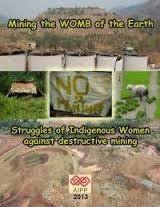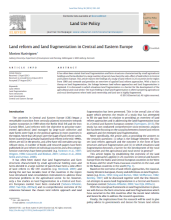Land Library
Welcome to the Land Portal Library. Explore our vast collection of open-access resources (over 74,000) including reports, journal articles, research papers, peer-reviewed publications, legal documents, videos and much more.
/ library resources
Showing items 1 through 9 of 10.Zambia recognizes two types of land tenure: customary and leasehold tenure. While historically the majority of land in Zambia has been held under customary tenure, leases (also called leasehold titles) are the only legal means of holding land rights.
We believe that law should in principle assist vulnerable communities in changing power relations. Law is fundamentally a ‘neutral’ set of rules that constrains power by requiring decisions and actions of those in power to comply with legal rules, rights and obligations.
Paper presented at the 14th global conference of the International Association for the Study of Commons, Mt Fuji, June 3- June 7, 2013
This publication is part of the Indigenous Peoples Human Rights Defenders Network (IPHRD Net) efforts to inform actors and stakeholders of the efforts of indigenous women and their communities to address violations of their rights, particularly their collective rights as indigenous peoples.
The rubber tree is native to the humid tropics and has traditionally been cropped in the equatorial zone between 108Nand 108S; in mainland Southeast Asia this includes portions of southern Thailand, southeastern Vietnam, and southern Myanmar.
This paper briefly explains the unique relationships of Orang Asli with the customary land. It further demonstrates the common views that there is a collision between the Orang Asli notion of land ownership and that of the state.
Malaysia has declared its vision of developed country status by the year 2020. Much has been written about its top-down development approach, its relative economic success and the social as well as environmental costs of such approach.
A guest post by Dr. Steven Lawry, Global Lead, Land Tenure & Property Rights at DAI, a USAID partner and global development company committed to shaping a more livable world. Follow them @DAIGlobal
It has often been stated that land fragmentation and farm structures characterized by small agricultural holdings and farms divided in a large number of parcels have been the side-effect of land reform in Central and Eastern Europe.








